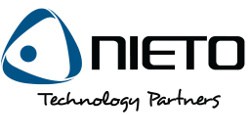Ransomware
Hackers have recently exploited malicious software stolen from the National Security Agency (NSA) and are executing damaging cyberattacks that have affected companies and individuals in dozens of countries worldwide. Transmitted via email, the malicious software locks users out of their computer systems and demanded ransom before users could be let back in — with a threat that data would be destroyed if the demands were not met.
If you believe you are affected by Ransomware or want to know more, contact Nieto Support immediately at support@nieto.com or (713) 893-5667.
What is Ransomware and what does it do?
Ransomware stops you from using your PC by holding your PC or files for “ransom”. It does this by infecting your PC and locking your screen or encrypting your files.
Ransomware will demand that you pay money (a “ransom”) to get access to your PC or files. There is no guarantee that paying the fine or doing what the ransomware tells you will give access to your PC or files again.
Ransomware Prevention
The following are best practices for the prevention of ransomware:
- Install a Dell SonicWall firewall with Total Secure. Ensure that all communication ports are closed except those that are absolutely necessary to conduct business.
- Install and use Continuum on all servers and PCs, which will install Webroot and Malwarebytes.
- Make sure all software on your PC is up-to-date.
- Avoid clicking on links or opening attachments or emails from people you don’t know or companies you don’t do business with.
- If using Internet Explorer, ensure you have smart screen turned on.
- Ensure that Adobe Flash is turned off.
- Turn off Office macros, if they’re enabled. (In Office 2016, you can ensure they’re off from the Trust Center > Macro Settings, or just type “macros” in the search box at the top, then open the “Security” box.)
- Have a pop-up blocker running in your web browser.
- Regularly backup your important files.
- Turn on File History (in Windows 10 and Windows 8.1) or System Protection for previous versions (in Windows 7 and Windows Vista). In some cases, these might have been turned on already by your PC manufacturer or network administrator
- Use a backup system that stores files in a manner where they cannot be altered.
- Stay out of the bad corners of the Internet. A bad ad on a legitimate site can still inject malware if you’re not careful, but the risks increase if you’re surfing where you shouldn’t.
Ransomware Recovery
We don’t recommend you pay. There is no guarantee that handing over the ransom will give you access to your files again. Paying the ransom could also make you a target for more malware.
How do I get my files back?
How to recover your files depends on where your files are stored and what version of Windows you are using. If you suspect a PC is infected, remove it from your network to prevent it from damaging files on network shares.
Before you try to recover files, contact Nieto Support at (713) 893-5667 to assist you in cleaning your PC and recovering your files.
